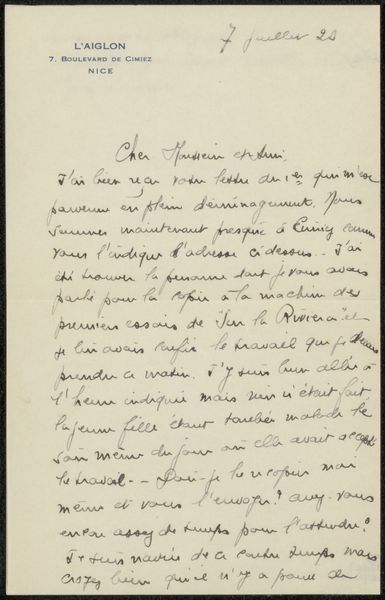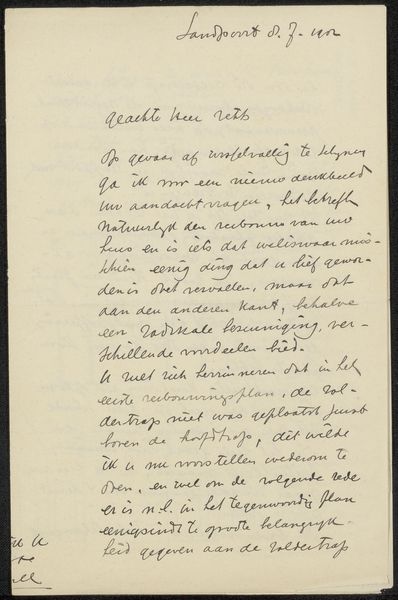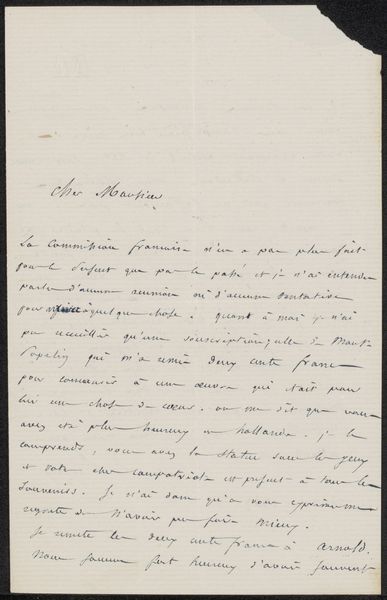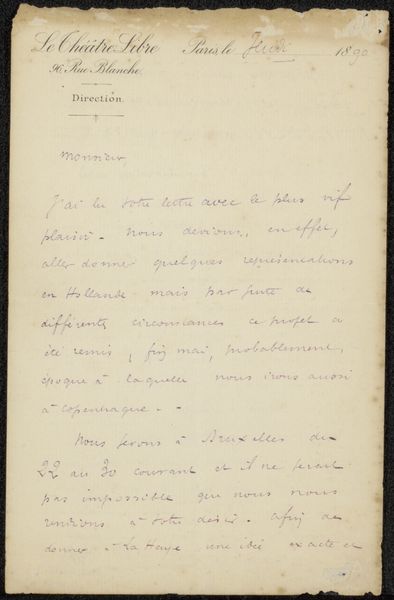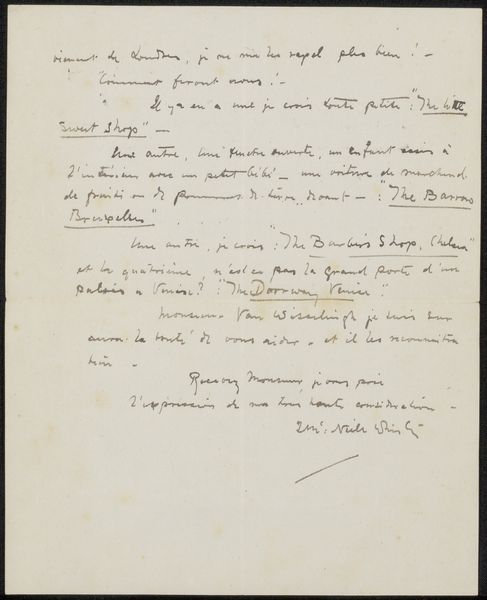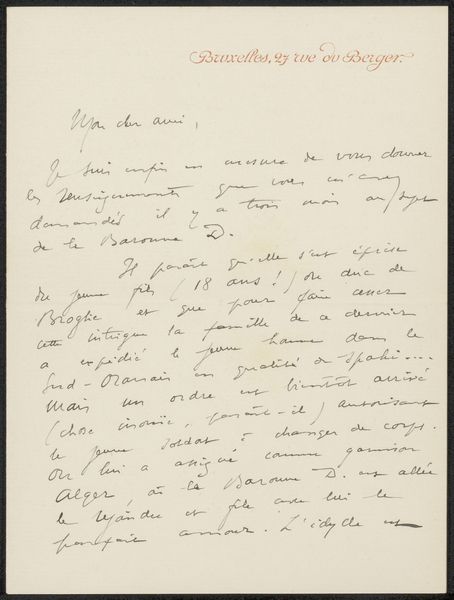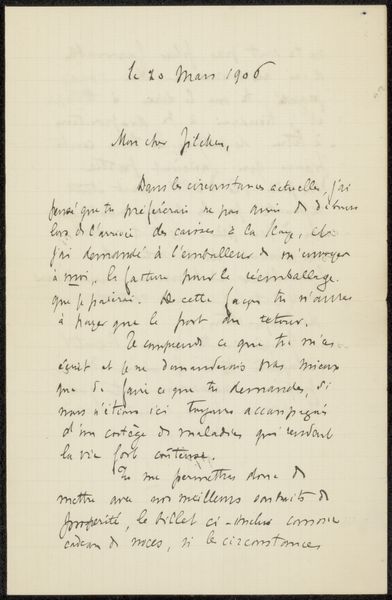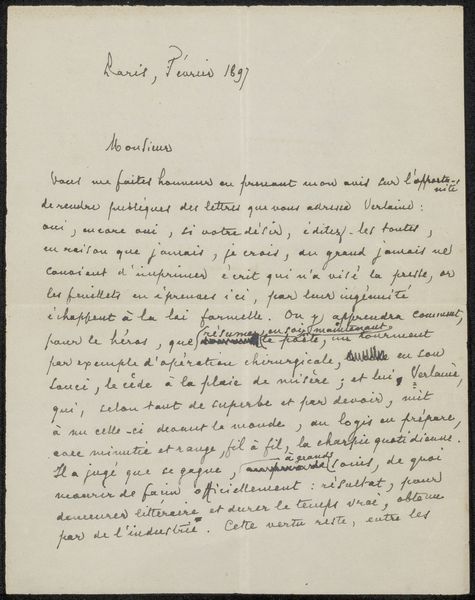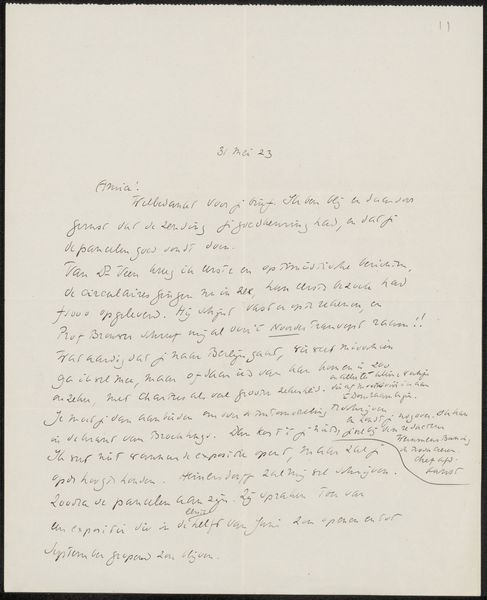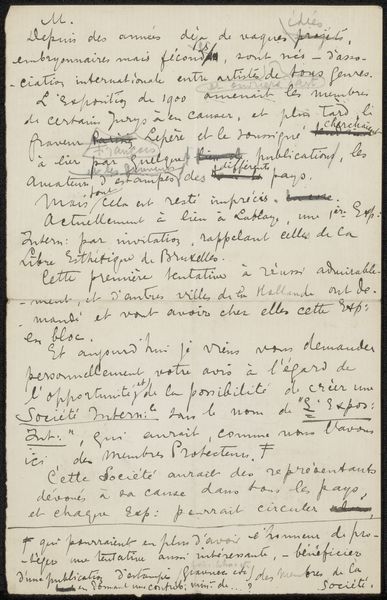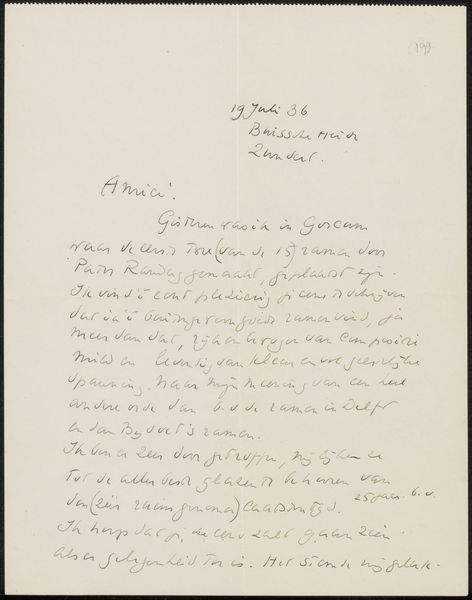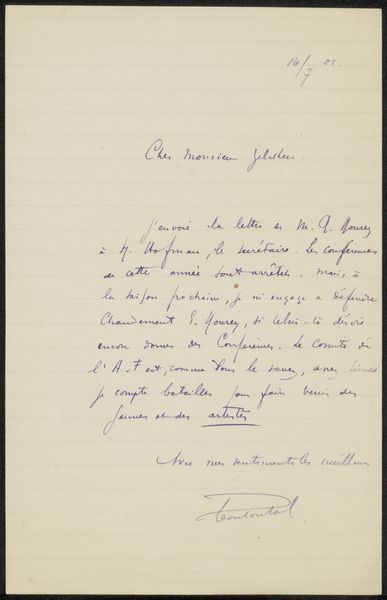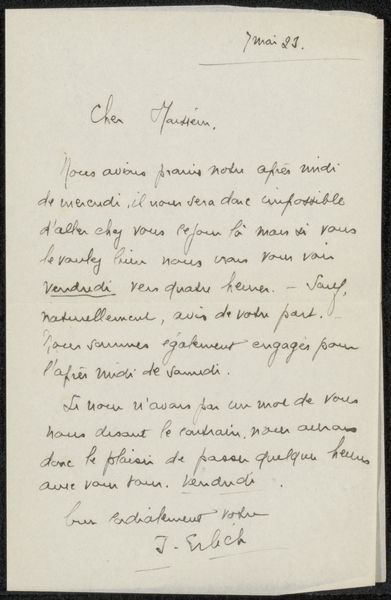
drawing, paper, ink
#
drawing
#
hand-lettering
#
old engraving style
#
hand drawn type
#
hand lettering
#
paper
#
personal sketchbook
#
ink
#
hand-drawn typeface
#
pen-ink sketch
#
pen work
#
sketchbook drawing
#
sketchbook art
#
calligraphy
Copyright: Rijks Museum: Open Domain
Editor: This intriguing piece, “Brief aan Philip Zilcken,” created before 1925 by Charles Destrée, is a drawing in ink on paper. The handwritten text and the visual weight of the ink strokes feel very intimate and immediate. How should we understand this drawing beyond it being a simple note? Curator: Considering a materialist lens, this is more than just a simple note. We must consider the means of production, the physical labor involved in its creation. The specific ink, the type of paper, and even the pen itself influenced the aesthetic outcome. It's a unique product resulting from Charles Destrée's handwriting, a mode of making accessible to many yet refined into art by some. Is there an element of social class that underpins this artistic production? Editor: I see what you mean. The everyday nature of the materials does challenge the high art/craft boundary. But is there more to consider regarding Destrée's access to these materials versus the recipient? Curator: Precisely! The materiality directs us to broader socio-economic questions. Who had access to these materials, to the education necessary to write and perhaps, practice calligraphy? Furthermore, how does the act of handwriting, especially in a pre-digital age, become a valued form of communication and expression? Are we looking at a democratizing of art production, or a reflection of existing power structures? Consider that. Editor: That’s a great point; I hadn't considered the socioeconomic implications of something as simple as ink and paper. Curator: It's through analyzing these elements – the paper, ink, handwriting – that we can truly understand the layers of meaning embedded within what might initially seem like a commonplace letter. We unveil social contexts and power dynamics. Editor: This really changed my perception of what to consider. Thanks! Curator: Materiality can transform our analysis by considering more the processes of making, rather than just interpreting the final output.
Comments
No comments
Be the first to comment and join the conversation on the ultimate creative platform.
